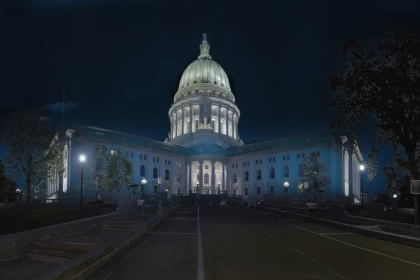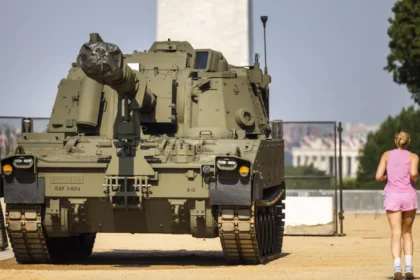As Washington, D.C. prepares for Saturday’s grand military parade marking the 250th anniversary of the U.S. Army, a new controversy has taken center stage — President Donald Trump’s threat to respond to nationwide protests with “very big force.”
While the event is being promoted as a patriotic celebration of military might, the president’s rhetoric has drawn sharp criticism from civil liberties groups and political leaders alike. His statement, meant to deter demonstrators from disrupting the parade, has amplified fears over growing restrictions on free expression in the country.
🚫 Free Speech Under Fire?
President Trump, who once vowed to “bring back free speech to America,” has repeatedly taken aim at expressions of dissent — especially when they challenge his administration. From mass arrests of activists to legal threats against demonstrators and media outlets, critics say the administration is systematically narrowing the space for opposing voices.
Nora Benavidez, a civil rights attorney with Free Press, described the trend as “a dangerous new phase of retaliation against free expression.” Her remarks were echoed by several international watchdogs.
Amnesty International condemned Trump’s recent comments as a direct threat to the constitutional right to peaceful protest. “Protesting is a human right,” the group emphasized. “The administration must uphold—not suppress—this right.”
🧷 A Pattern of Silencing
Alarming incidents have reinforced these concerns. Senator Alex Padilla was forcibly removed and briefly detained during a press conference by Homeland Security Secretary Kristi Noem in Los Angeles. Speaker Nancy Pelosi labeled the incident “an assault on freedom of speech.”
Journalists have also reported mounting challenges. A coalition of 60 media organizations, including CNN and the Reporters Committee for Freedom of the Press, recently sent a joint letter urging officials to guarantee press freedom during protests, particularly those against ICE operations.
🤐 Speech, but Only the “Right” Kind?
Many critics argue the current administration is not just curbing free speech but redefining what kind of speech is acceptable. President Trump has frequently denounced certain voices as “woke,” “fake,” or “dangerous.” He recently claimed that “woke ideology” had been nearly eradicated from society — a boast that civil liberties advocates say hints at state-led censorship.
In a controversial interview, Trump even suggested that Elon Musk could face “serious consequences” if he supported political opponents — a comment widely interpreted as a threat based on political affiliation.
Free speech groups have also expressed alarm at Trump’s assertion that protestors cannot wear masks, a stance they say directly infringes on both safety and expression rights.
📚 Crackdowns Beyond the Streets
The administration’s battles with media organizations such as NPR, PBS, Voice of America, and the Associated Press have led to ongoing First Amendment lawsuits. The core accusation: viewpoint discrimination — punishing media outlets for coverage deemed unfavorable.
Even symbolic actions, like removing books and scrubbing government websites, have been interpreted as part of a broader effort to limit access to dissenting narratives.
📣 A Nation in the Crosshairs of Constitutional Debate
California Governor Gavin Newsom weighed in during a state address, warning of what he called Trump’s “assault on the First Amendment.” He urged residents to stand up for their rights — but to do so peacefully.
With the “No Kings” movement planning widespread protests during the parade, the weekend is shaping up to be more than a celebration — it’s a nationwide test of how far the U.S. will go in defending its founding freedoms.










